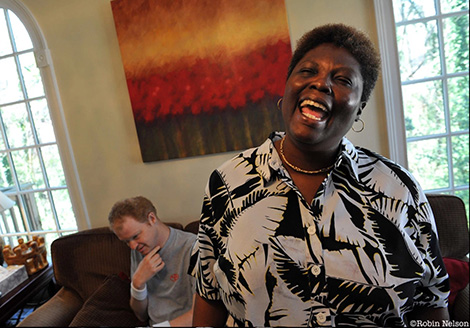Celebrating Black History Month

Lois Curtis paved the way for people with psychiatric, developmental, and intellectual disabilities to get out of institutional settings and live within their communities. She is the person behind the Olmstead Decision, often thought of as the most important civil rights decision in U.S. history for people with disabilities.
Curtis was diagnosed with schizophrenia and intellectual and developmental disabilities as a child. At age 11, she was sent to Georgia Regional Hospital, a state mental institution, where she remained until she was 29 years old.
In 1995, a legal aid attorney took Curtis’ court case against Tommy Olmstead, the commissioner of the Georgia Department of Human Resources. The Department had kept Curtis in the hospital for several years after her treatment team had determined she was better suited to living in the community. By the time the case came to court, an additional plaintiff, Elaine Wilson, was added to the case, having received the same determination.
Two years later, in 1997, a judge ruled that the Georgia Department of Human Resources and Regional Hospital failed to place Curtis and Wilson in adequate housing. The decision was appealed the following year, and in 1999 the United States Supreme Court heard the case and ruled that it was unconstitutional for Curtis and Wilson to be forced to stay in the mental institution when they could be, and wanted to be, living in the community. The U.S. Supreme Court’s 1999 landmark decision in Olmstead v. L.C. found the unjustified segregation of people with disabilities to be unlawful discrimination under the Americans with Disabilities Act (ADA) and mandated that people with disabilities receive services in the most integrated and least restrictive environment possible. Lois Curtis now lives life on her own terms doing what she loves to do every day, creating art and music. She lives in her own home with a direct support professional, and she has chosen to make art and advocacy her life’s work.
